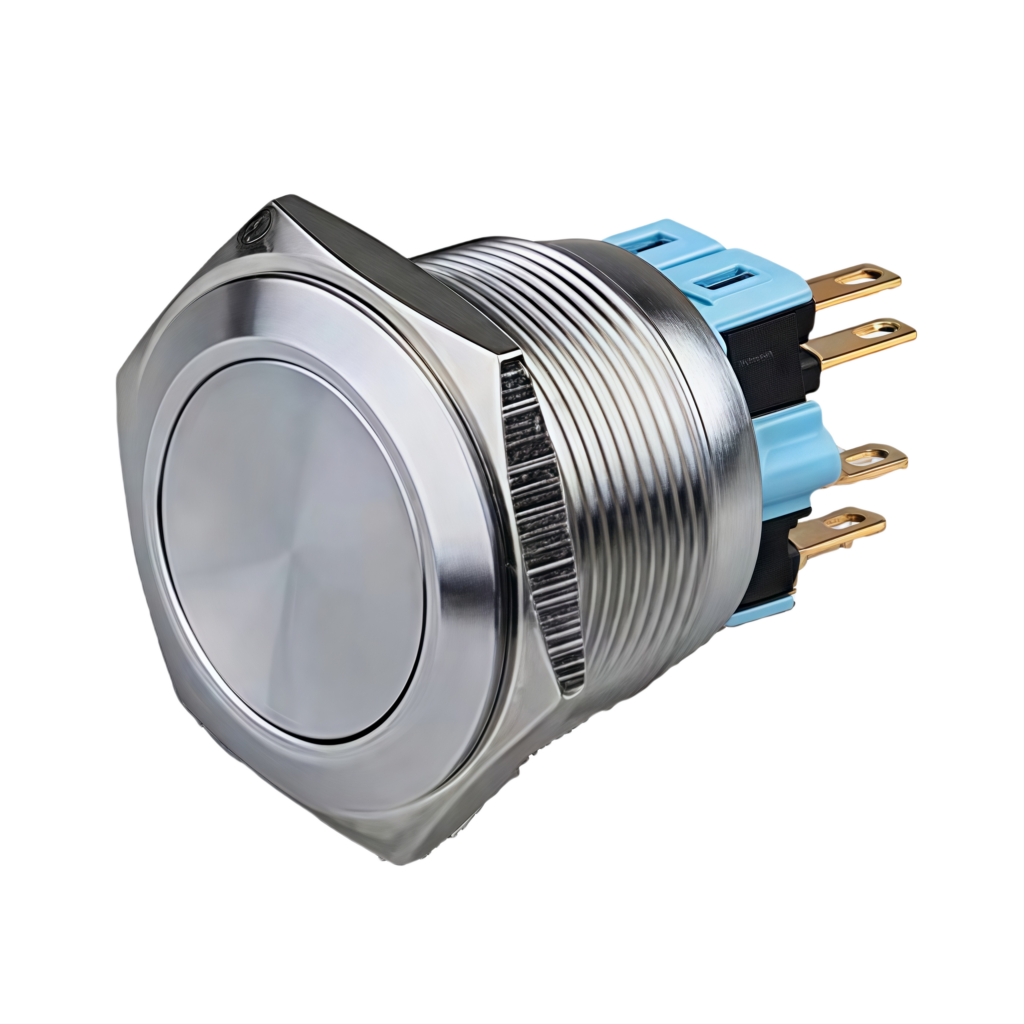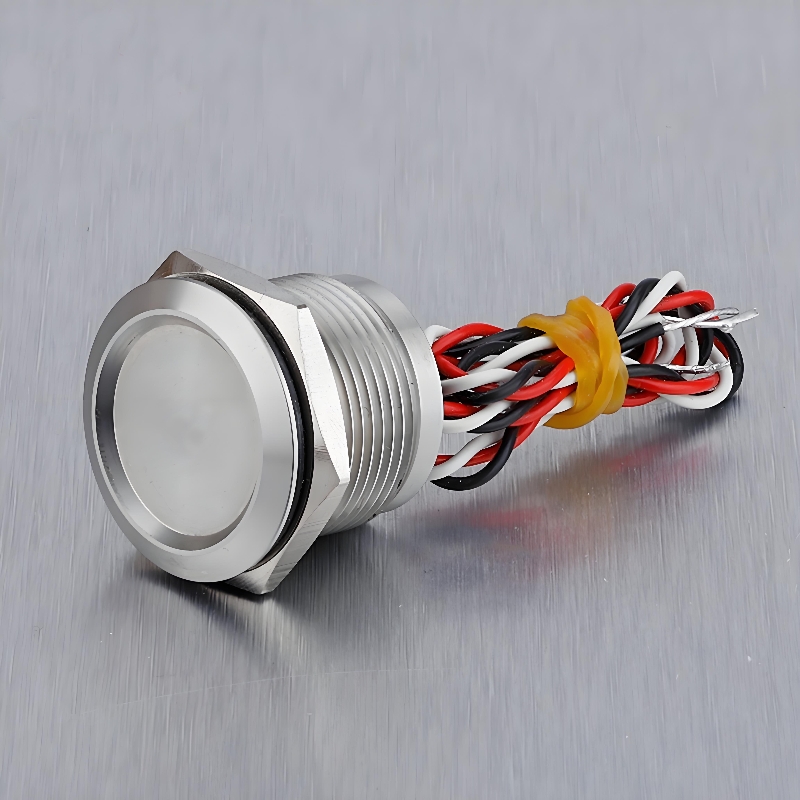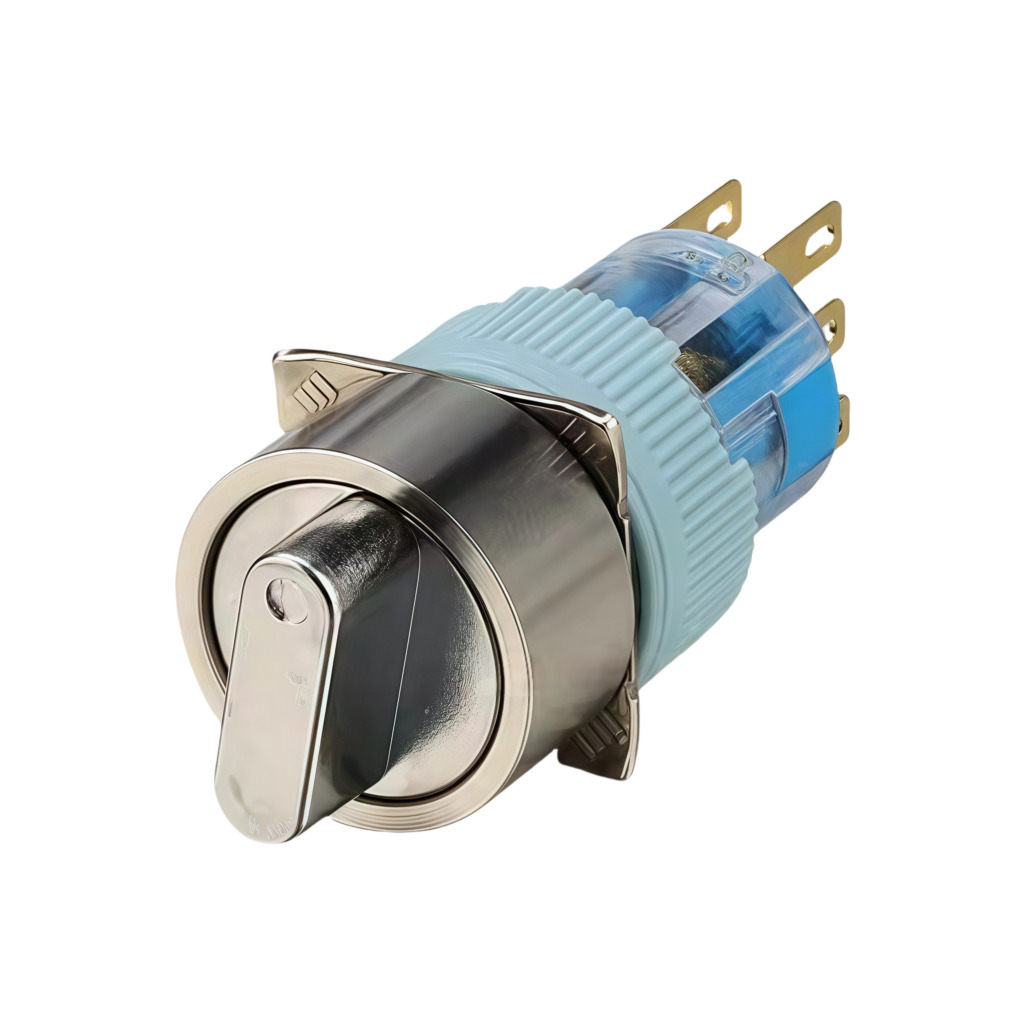When we envision the factories of the future—bathed in the glow of AI-driven robotics and humming with IoT connectivity—it’s easy to overlook a humble hero: the industrial push button switch. Yet, beneath its unassuming exterior lies a technological metamorphosis that’s quietly powering the Fourth Industrial Revolution.

From Binary to Brilliant: The Evolution of Tactile Control
Traditional push button switches were simple mechanical workhorses—press to connect, release to disconnect. But in Industry 4.0, these components have evolved into intelligent interfaces. Modern variants now integrate:
Embedded sensors tracking actuation force (15N to 50N ranges) for predictive maintenance
Self-diagnostic circuits monitoring contact resistance below 50mΩ to prevent arc faults
RFID/NFC tags enabling digital twin synchronization in PLC systems
A case study from a German automotive plant reveals how IP69K-rated stainless steel switches with HMI integration reduced emergency shutdown errors by 37% through real-time tactile feedback.
Material Science Meets Connectivity
The push toward extreme environments demands radical material innovations:
Aluminum alloy bodies with Type III hard anodizing withstand salt spray tests exceeding 500hrs
Gold-plated bifurcated contacts maintain <10mΩ resistance in -40°C to 125°C ranges
PEEK thermoplastic actuators resisting hydrolysis in high-pressure washdown areas
These advancements aren’t just about durability—they enable switches to serve as edge devices in IIoT networks, transmitting data through protocols like IO-Link and MQTT.

The Human Factor in Automated Worlds
Paradoxically, as factories grow smarter, ergonomic switch design becomes crucial. A 2023 study in Industrial Ergonomics found that:
22mm concave actuators reduce operator fatigue by 18% during 8hr shifts
Tactile switches with 0.3mm pretravel minimize accidental actuations
RGB LED indicators cutting diagnostic time by 41% through color-coded status alerts
This symbiosis of human intuition and machine intelligence is where tomorrow’s control systems are being forged—one press at a time.


